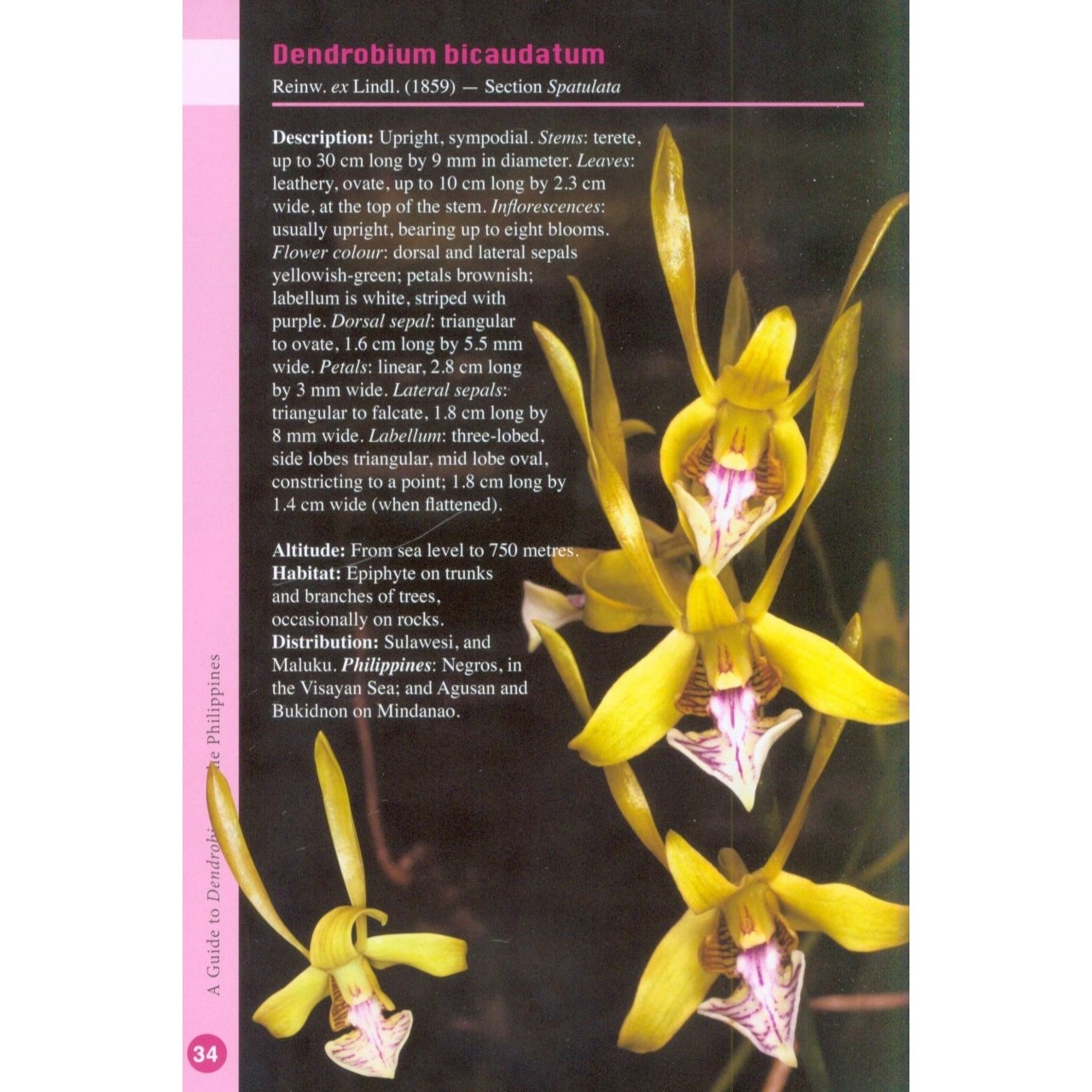




A Guide to Dendrobium of the Philippines
- Inclusief 9% btw: €16,01
- Exclusief btw: €14,69
- Gratis verzending in Nederland vanaf €50,-*
- Op werkdagen voor 17:00 uur besteld? Zelfde dag verzonden!
- Niet goed? Geld terug
- We denken graag met u mee!















| Auteurs | Jim Cootes & George Tong |
| ISBN | 9789838121576 |
| Uitgever | Natural History Publications Borneo |
| Taal | Engels |
| Pagina’s | 142 |
| Bindwijze | Paperback |
| Afbeeldingen | Kleurenfoto's |
| Jaar van uitgave | 2015 |
The genus Dendrobium was named by Olof Swartz in 1799. The generic epithet refers to the epiphytic habit of the majority of the species. With about 1580 species, it is the second largest orchid genus, behind only Bulbophyllum. Dendrobiums are one of the most widely distributed genera, being found as far north as Korea and Japan, throughout China, west to India and Sri Lanka, down through Peninsular Malaysia, Indonesia, Borneo, the Philippines, Guam, New Guinea, Australia and as far east as Tahiti.
The genus, when taken in the broad sense, and as represented in the Philippines, has about 110 species. In fact, the Philippines is considered one of the centres of biodiversity for the genus and its relatives. In this Guide, the authors present information on the species that have been recorded from the Philippines archipelago. The list is as up to date as possible; however, new areas are still being opened up for exploration and study, and consequently more new species of all types of orchids are continually being found and described.
There is one major difference with this book, when compared with the two previous publications in this series, namely, A Guide to Dendrobium of New Guinea, and A Guide to Dendrobium of Borneo, both of which highlight the species of a single island. In contrast, A Guide to Dendrobium of the Philippines has species from an archipelago comprising over 7100 islands. These islands range in size from large ones, such as Luzon and Mindanao at roughly 100,000 square kilometres, to mere dots in the ocean which are uninhabited. Obviously there are many habitats which are similar between New Guinea, Borneo and the Philippines, however the major difference is that the Philippines does not have the high mountains of New Guinea and Borneo. The highest mountain in the Philippines is Mount Apo, in Davao province on Mindanao, at just under 3000 metres. This means that there is no truly montane forest in the Philippines, and consequently orchids that thrive in this climate are absent.
In this context, as background, an introduction to the geography of the islands that make up the Philippine archipelago is provided. This is followed by a description of the climatic zones, as defined by monsoonal influences, found in the islands. The distribution of rainfall has a profound impact on the development of the flora and, together with temperature variations due to altitude, results in distinct floral zones. From a paleontological perspective, during the early millennia, it is likely that the migration of species occurred through land bridges which connected mainland Asia to Taiwan to the northern Philippine island of Luzon, as well as through the islands of Borneo and Sulawesi from the south. Over time, the isolation of the islands of the Philippines, as a consequence of rising and falling sea-levels, has aided the evolution and differentiation of species which we observe today. With this background in mind, we profile the species that currently make up the genus Dendrobium and its allied genera.
Jim Cootes has been an avid orchid grower for over 40 years, and has always had a fascination with Mother Nature and her magnificent handiwork. His interest in Philippine orchid species started in the mid-1980s following a trip to the mountains of central Luzon. The research work into Philippine orchids began after plants from the trip began flowering and some could not be identified. In the 1990s, he started writing his first book, The Orchids of the Philippines, which was published in 2001. The research into Philippine orchid species continued, and his second book in 2011, Philippine Native Orchid Species, contained many new additions to the list of known species. During the intervening years, he has named numerous new orchid species from the Philippines, both by himself and in cooperation with other orchid workers. Outside of plants, Jim has a large collection of Philippine cone shells. Other interests include reading, playing the guitar and listening to music.
George Tiong is a pharmacologist by background, having obtained his PhD from Monash University. He has worked within the pharmaceutical industry for over two decades, in regulatory and medical management roles, with a number of international corporations, and currently works as a consultant. George is also a qualified horticulturist, and has an enduring interest in orchid species and orchid culture. He has been collaborating with Jim in Philippine orchid studies, and the two have co-authored numerous articles in orchid publications. Listening to classical music, reading and exploring the “bush” are some of his favourite leisure activities.
Er zijn nog geen reviews geschreven over dit product..
Maak uw bestelling compleet